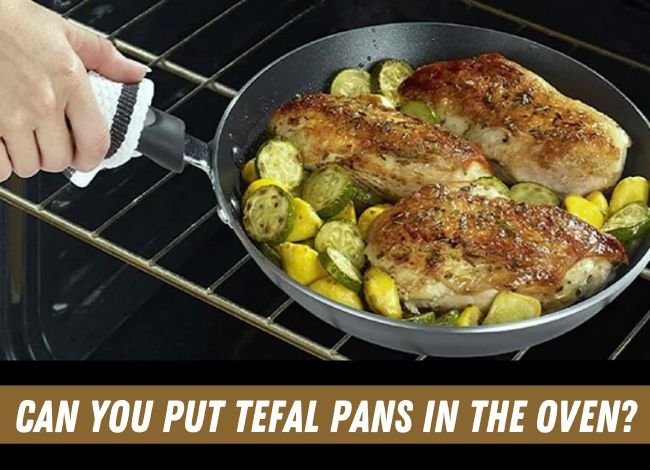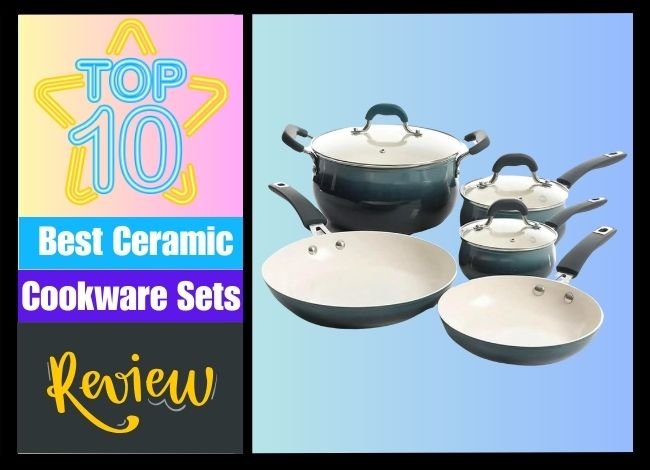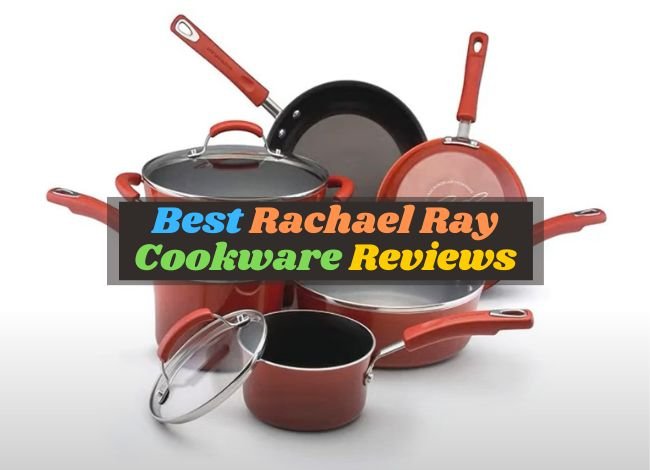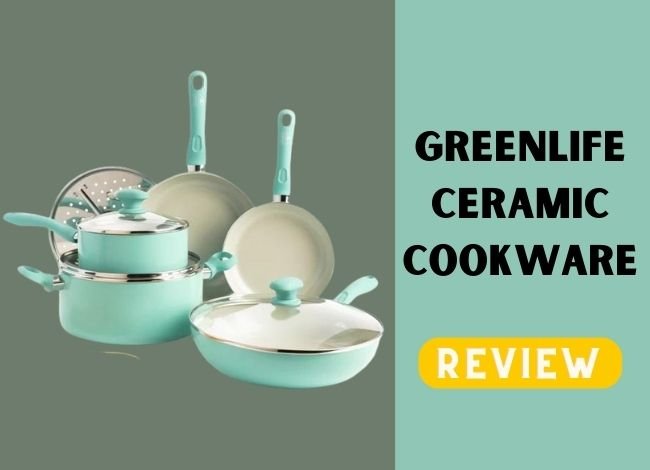Last Updated on February 8, 2024
When it comes to cooking, versatility in kitchen tools is a key factor for efficiency and creativity. One common question that arises among cooking enthusiasts is whether Tefal pans, known for their convenience and non-stick properties, can be safely used in the oven. This post aims to provide a comprehensive answer to this query, delving into the compatibility of Tefal pans with oven use, considerations for using Teflon pans in the oven, ways to identify oven-safe cookware, and general guidelines for baking pans in the oven. Understanding these aspects will not only enhance your cooking experience but also ensure safety in the kitchen.
People also wonder if my Tefal pans can be used in the oven
Tefal pans are a popular choice in many kitchens due to their non-stick surface and ease of use. But can these pans transition from the stovetop to the oven? The answer largely depends on the specific model of the Tefal pan. Most Tefal pans are designed to withstand certain oven temperatures, typically up to 175°C (350°F).
However, checking the manufacturer’s specifications for your particular pan is crucial. The handle material is a key factor; pans with metal handles are more likely to be oven-safe compared to those with plastic handles. It’s also important to consider the duration of oven use, as prolonged exposure to high heat can deteriorate the non-stick coating. Always refer to the care instructions provided by Tefal to ensure that you’re using your pan within its intended capabilities.
Similar Post: Can anolon go in the oven?
Also, can Teflon pans be used in the oven?
Teflon-coated pans, known for their excellent non-stick properties, raise questions about their oven compatibility. Generally, Teflon pans can be used in the oven, but with certain limitations. The primary concern with Teflon pans in the oven is the temperature threshold. Teflon coatings can start to break down and release fumes at temperatures above 260°C (500°F). Therefore, using Teflon pans in the oven is safe as long as the temperature is kept below this limit.
It’s also important to consider the pan’s overall construction. Like Tefal pans, the handle and lid materials significantly determine if the pan is oven-safe. Always consult the manufacturer’s guidelines before using Teflon pans in the oven to avoid damage to the pan and potential health risks.
As a result, how can you tell if your pan is oven safe?
Determining if your pan is oven-safe is crucial for both cooking success and safety. The first step is to check for any manufacturer’s markings or symbols on the pan, often located on the bottom of the handle. These symbols typically indicate if the pan is oven-safe and the maximum temperature it can withstand.
If there are no clear markings, consider the material of the pan and its components. Metal pans, especially those made of stainless steel or cast iron, are generally safe for oven use. The handle material is also a key indicator – metal handles are usually oven-safe, while plastic or wood handles are not. If in doubt, consult the manufacturer’s website or customer service for specific information about your pan. Remember, using a pan in the oven that is not designed for such use can damage the pan and pose safety risks.
Similar Post: Can I put terracotta in the oven?
Is it possible to bake pans in the oven?
Baking with pans in the oven opens up a world of culinary possibilities, from roasted vegetables to baked fish. However, it’s important to understand which types of pans are suitable for baking. Oven-safe pans are those that can withstand the oven’s high temperatures without warping or releasing harmful chemicals. Materials like stainless steel, cast iron, and certain non-stick coatings like Teflon (below their temperature threshold) are generally safe for baking. Glass and ceramic dishes are also excellent choices for oven baking. Always check the manufacturer’s guidelines for the maximum safe temperature.
When using non-stick pans, avoid using metal utensils or abrasive cleaners to maintain the integrity of the non-stick surface. You can safely and effectively use pans for baking in the oven by choosing the right pan and following proper usage guidelines.
Is Tefal Identical to Teflon?
Tefal, a well-known brand in cookware, is often confused with Teflon, but there are key differences to understand. Tefal refers to a brand that produces various cookware, including pans with non-stick surfaces. Conversely, Teflon is a trademarked coating created by Chemours (formerly DuPont) and is used across various brands, including Tefal.
Tefal pans often utilize Teflon coatings for their non-stick properties. This coating is made from polytetrafluoroethylene (PTFE), a chemical compound that helps prevent food from sticking. It’s essential to note that while Tefal is a brand name, Teflon is a type of non-stick coating. Therefore, when purchasing a Tefal pan, it’s likely to feature Teflon coating, but not all non-stick pans with Teflon are from Tefal. Understanding this distinction helps consumers make informed choices about their cookware based on brand reputation, coating quality, and personal cooking needs.
When it Comes to Tefal Pans, How Long Do They Last?
The lifespan of Tefal pans is a common concern for many home cooks. Generally, the durability of these pans depends on several factors, including the frequency of use, maintenance, and the type of utensils used with them. On average, a well-maintained Tefal pan lasts three to five years. It’s crucial to follow care instructions, such as using wooden or silicone utensils to avoid scratching the non-stick surface and washing the pans by hand instead of in a dishwasher to prolong their life.
Overheating and thermal shock (such as immersing a hot pan in cold water) can also degrade the non-stick coating faster. Tefal pans are known for their robust build and quality materials, but like all non-stick pans, they require gentle care to maintain their optimal performance over time. Regular inspection for scratches or flaking of the non-stick coating is essential, as these are signs that the pan needs replacement for safety and performance reasons.
Similar Post: Can Le Creuset stoneware go in the oven?
I’m Not Sure What I Can Put in the Oven
When it comes to oven use, not all cookware is created equal. It’s essential to know which items are oven-safe to avoid damaging your cookware or risking your safety. Materials like cast iron, stainless steel, and certain ceramics are typically safe for oven use. For non-stick pans, like those from Tefal, the key is to check the manufacturer’s specifications.
Most Tefal pans are designed to be oven-safe up to a certain temperature, usually around 350°F (175°C). However, components like plastic handles or certain types of non-stick coatings might limit their oven safety. Always check the bottom of the pan or the user manual for specific temperature limits. It’s also important to avoid sudden temperature changes, which can warp or damage the pan. By understanding these guidelines and checking your cookware’s specifications, you can confidently use your kitchen tools in the oven without worry.
Is it Possible to Use a Nonstick Pan in the Oven?
Using a nonstick pan in the oven is a question that hinges on the specific design and materials of the pan. Many nonstick pans, including certain models from Tefal, are indeed oven-safe, but there are limitations. The oven safety of a nonstick pan depends on the maximum temperature it can withstand, which is often determined by the handle material and the type of non-stick coating. For instance, pans with metal handles are generally more oven-safe than plastic ones.
Tefal’s nonstick pans are often rated safe for oven use up to a specific temperature, usually around 350°F to 400°F (175°C to 204°C). It’s crucial to refer to the manufacturer’s guidelines before placing any nonstick pan in the oven. Exceeding the recommended temperature can damage the non-stick coating or the structural integrity of the pan. Remember, while nonstick pans offer convenience and easy cleanup, their oven safety varies, so always check the product specifications for safe and effective use.
Is using a Pan with a Plastic Handle in the Oven Safe?
The safety of using a pan with a plastic handle in the oven is a critical consideration for any cook. Generally, pans with plastic handles are not designed to withstand high oven temperatures. The plastic can melt or warp, which ruins the pan and poses a safety hazard in your kitchen. However, there are exceptions based on the type of plastic used.
Some high-quality pans, including specific models from Tefal, feature heat-resistant plastic handles that can tolerate limited oven temperatures, typically up to 350°F (175°C). It’s essential to consult the manufacturer’s instructions to understand the limitations of your specific pan.
If the pan is not explicitly stated to be oven-safe, it’s best to err on the side of caution and avoid placing it in the oven. For recipes requiring oven use, consider using cookware with metal handles or all-metal construction, which are typically safe for higher oven temperatures. Safety and proper cookware are paramount in any cooking endeavor, so always check your equipment’s specifications before proceeding.
Can You Put Tefal Pans in the Oven?
Tefal pans are a popular choice for cooks due to their non-stick surfaces and durability. But when it comes to oven use, it’s important to be cautious. Not all Tefal pans are created equal; some are designed to withstand oven temperatures, while others are not. Tefal pans with metal handles are typically oven-safe up to a specified temperature, usually around 175°C (350°F). However, pans with plastic handles or components should never be placed in the oven, as they can melt or release harmful fumes.
It’s essential to check the manufacturer’s guidelines for your specific pan model. While using a Tefal pan in the oven can be a convenient way to start a dish on the stove and finish it off in the oven, always ensure it’s designed for such use.
Is All Stoneware Suitable for Use in the Oven?
Stoneware is a popular choice for baking due to its heat retention properties. However, not all stoneware is created equally for oven use. High-quality stoneware can generally withstand high oven temperatures, making it perfect for baking bread, casseroles, and more. But some decorative stoneware pieces, particularly those with intricate designs or glazes, may not be oven-safe.
These pieces can crack or break under high heat. It’s crucial to check the manufacturer’s instructions before using any stoneware in the oven. Additionally, it’s advised to avoid sudden temperature changes with stoneware; allow it to come to room temperature before placing it in a hot oven or vice versa. This precaution prevents cracking due to thermal shock.
Is it Possible to Bake with Aluminium Foil?
Aluminium foil is a versatile kitchen staple, often used for baking and cooking. It’s oven-safe and withstands high temperatures, making it suitable for lining baking sheets, covering dishes, or even creating makeshift pans. However, there are a few considerations. Aluminium foil should not directly contact highly acidic foods, like tomatoes or citrus, as it can leach into the food.
Also, using foil to cover dishes can slow down browning. If you’re using it to line a baking sheet, be aware that its reflective nature can slightly increase cooking times. Remember, though, never to use aluminum foil in a microwave oven.
What Kinds of Bowls Can Be Used in the Oven?
Not all bowls are suitable when it comes to baking or roasting in the oven. The safest options are bowls specifically labeled as oven-safe. These include certain glass, ceramic, metal, and stoneware bowls.
However, plastic, melamine, or regular glass bowls should never be used in the oven as they can melt or shatter. It’s important to check for a label or manufacturer’s instructions to ensure the bowl can withstand the heat. Also, even with oven-safe bowls, avoid sudden temperature changes; do not place a cold bowl directly into a hot oven or vice versa.
What is the Appearance of a Roasting Pan?
A roasting pan is an essential kitchen tool for cooking large cuts of meat or poultry. Typically, it is rectangular with high sides to contain juices and prevent spilling. These pans often have racks to elevate the meat, allowing heat to circulate evenly. Roasting pans can be made of various materials, including stainless steel, aluminum, and enameled cast iron.
The choice of material can affect cooking performance, with some providing better heat distribution and retention than others. A quality roasting pan is a versatile tool, suitable for everything from a Thanksgiving turkey to a Sunday roast.
Is it Possible to Bake a Glass Bowl?
Glass bowls can be used in the oven, provided they are labeled as oven-safe. This designation means the glass can withstand high temperatures without breaking. However, not all glass bowls are created equal. Regular glass, like that used in most drinking glasses, is unsuitable for oven use.
Avoiding sudden temperature changes is crucial when using a glass bowl in the oven. Do not transfer a glass bowl directly from the fridge to the oven or vice versa. Also, place the bowl on a dry, room-temperature or slightly preheated oven rack to prevent thermal shock. Oven-safe glass bowls are great for baking dishes like casseroles or for roasting vegetables.
Is it Possible to Bake with Cast Iron?
Absolutely! Cast iron cookware is renowned for its versatility and durability, making it an ideal choice for both stovetop and oven use. When baking with cast iron, its excellent heat retention and even heat distribution are key advantages. This makes it perfect for baking pies, cornbread, or even roasting meats.
However, ensuring that your cast iron skillet or pan has no wooden or plastic components that could be damaged in the oven is crucial. Seasoning your cast iron is also vital; this process not only protects it from rust but also creates a natural, non-stick surface. Care must be taken when handling cast iron cookware as it becomes extremely hot in the oven.
Always use oven mitts or potholders. Lastly, avoid sudden temperature changes to prevent the cast iron from cracking. With these tips in mind, your cast iron cookware can be a reliable companion for delicious oven-baked meals.
What is the Best Way to Tell if My Nonstick Pan is Ruined?
Determining your nonstick pan’s condition is crucial for cooking performance and safety. A key sign that your nonstick pan is ruined is if the coating starts peeling, flaking, or chipping. Consuming these particles can be harmful, so it’s important to stop using the pan if you notice these signs. Another indicator is when foods start to stick consistently, despite using oils or butter.
This suggests the nonstick surface has degraded. Discoloration or warping of the pan, often caused by overheating or misuse, also impairs its performance. Nonstick pans are designed to be used on low to medium heat, and using them on high heat can damage the coating. Also, avoid using metal utensils, which can scratch and wear down the nonstick surface.
If you notice any of these signs, it might be time to replace your nonstick pan. Regularly assessing your cookware not only ensures better cooking results but also maintains safety in the kitchen.
Can Aluminium Disposable Pans be Reused? Do You Want to Use the Oven?
Aluminum disposable pans offer convenience, but they can also be reused with some care, especially in the oven. These pans are often used for baking, roasting, and storing food due to their lightweight and heat-conductive nature. To reuse, first, check for any signs of damage like holes or tears, which can cause leaks or uneven cooking.
If the pan is intact, thoroughly clean it to avoid contamination. While aluminum pans can handle oven temperatures, avoid using them under the broiler or at extremely high temperatures, as they might warp or melt. It’s also important to note that acidic foods can react with aluminum, so it’s best to avoid using these pans with recipes involving tomato sauce or citrus juices for extended periods.
Reusing aluminum disposable pans can be an economical and environmentally friendly practice, as long as they are in good condition and used appropriately in the oven.
Is a Stainless Steel Bowl Safe to Use in the Oven?
Using a stainless steel bowl in the oven is generally safe, provided it’s made of high-quality, oven-safe material. Stainless steel is known for its excellent heat tolerance and resistance to rust, making it a good option for oven use.
However, ensure that the bowl has no plastic, rubber, or non-metal parts that could melt or release harmful fumes at high temperatures. Also, verify that it’s labeled as oven-safe by the manufacturer. Stainless steel bowls are great for baking, roasting, and marinating. They are particularly useful for preparing bain-marie dishes or as mixing bowls that can go directly into the oven.
Despite their durability, stainless steel bowls should not be exposed to extremely high temperatures or placed under a broiler, which could cause warping or discoloration. Always use oven mitts when handling hot stainless steel, and allow it to cool before cleaning to prevent warping. With these precautions, stainless steel bowls can be versatile in your oven cookware.
Conclusion
Understanding the capabilities and limitations of your cookware is essential for safe and effective cooking. Whether it’s cast iron, nonstick pans, aluminum disposable pans, or stainless steel bowls, each has its specific use and care instructions.
Using them properly not only ensures your safety but also extends the life of your cookware. Regular maintenance and being mindful of the manufacturer’s guidelines can greatly enhance your cooking experience. Remember, the right tool can make all the difference in the kitchen, so choose wisely and take good care of your cookware.




